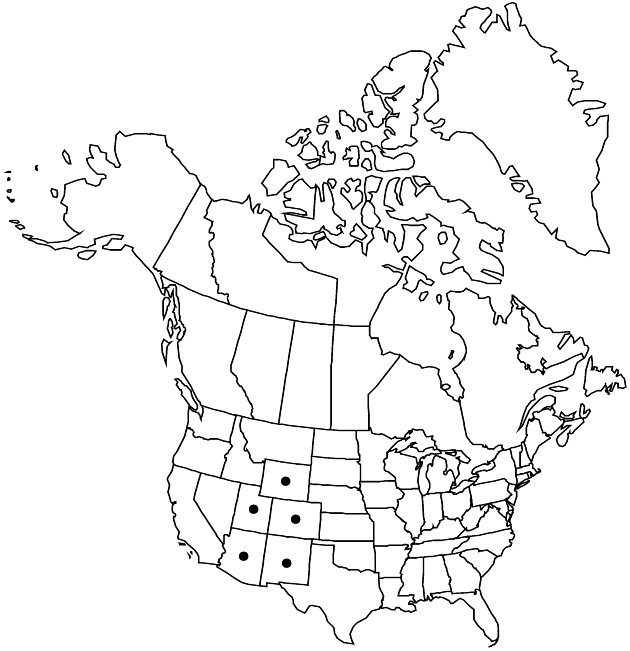Pyrrocoma crocea
Erythea 2: 69. 1894.
Plants (10–)18–80 cm. Stems 2–10, erect or ascending, pale or reddish, often stout, usually glabrous, often tomentose distally. Leaves: basal petiolate, blades oblanceolate to spatulate or narrowly elliptic, 80–450 × 5–60 mm (firm, leathery, succulent), margins entire or undulate, eciliate, apices acute or obtuse, faces usually glabrous, rarely puberulent, eglandular; cauline sessile, blades lanceolate, 10–120 × 5–30 mm, bases clasping. Heads usually borne singly, terminal, sometimes 2–6 (not subtended by leaflike bracts). Peduncles 1–5 cm. Involucres hemispheric, 10–20 × 15–60 mm. Phyllaries in 2–3 series (loose), usually green, sometimes yellowish, oblong to spatulate, 9–15 mm, subequal, margins pale, entire or denticulate, eciliate, apices ± erect, obtuse, broad. Ray florets 30–90; corollas (bright yellow) 9–30 mm. Disc florets 100+; corollas 7–13 mm. Cypselae narrowly oblong, compressed, 5–8 mm, 4-angled, faces striate, glabrous; pappi tawny, 6–12 mm.
Distribution

w United States.
Discussion
Varieties 2 (2 in the flora).
Pyrrocoma crocea is recognized by its thick stems, large, firm leaves, and large heads with oblong to spatulate phyllaries. H. M. Hall (1928) considered it the ancestral form of Pyrrocoma because of its large heads, numerous florets, long rays, and short style-branch appendages. R. A. Mayes (1976) suggested it is closely related to P. integrifolia.
Selected References
None.
Key
| 1 | Plants 30–80 cm, robust; heads usually borne singly; involucres 15–20 × 20–40 mm; ray florets 13–30 mm | Pyrrocoma crocea var. crocea |
| 1 | Plants 10–30 cm, slender; heads usually 2–6, occasionally 1; involucres 10–15 × 15–20 mm; ray florets 9–12 mm | Pyrrocoma crocea var. genuflexa |